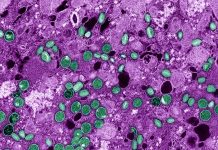The Laser Interferometer Space Antenna (LISA) mission has received the go ahead of European Space Agency (ESA). This paves the way for developing the instruments and spacecrafts commencing January 2025. The mission is led by ESA and is a result of collaboration between ESA, its Member State space agencies, NASA, and an international consortium of scientists.
Scheduled to be launched in 2035, LISA will be the first space-based gravitational wave observatory dedicated to detection and study of millihertz ripples caused by distortions in the fabric of space-time (gravitational waves) across the universe.
Unlike the ground based gravitational wave detectors (LIGO, VIRGO, KAGRA, and LIGO India) which detect gravitational waves in frequency range of 10 Hz to 1000 Hz, LISA will be designed to detect gravitational waves of much longer wavelengths in the low frequency range between 0.1 mHz and 1 Hz.
Ultra-low-frequency (10−9–10−8 Hz) gravitational waves (GWs) with wavelengths from weeks to years from supermassive binary black holes can be detected using ground-based Pulsar Timing Arrays (PTAs). However, low frequency gravitational waves (GWs) with frequency between 0.1 mHz and 1 Hz can neither be detected by LIGO nor by Pulsar Timing Arrays (PTAs) – the wavelength of these GWs is too long for LIGO and too short for PTAs to detect. Hence, the need for space-based GW detector.
LISA will be a constellation of three spacecrafts in accurate equilateral triangle formation in space. Each side of the triangle will be 2.5 million km long. This formation (of the three spacecrafts) will orbit Sun in an Earth-trailing heliocentric orbit between 50 and 65 million km from Earth while maintaining a mean inter-spacecraft separation distance of 2.5 million km. This space-based configuration makes LISA an extremely large detector to study low frequency gravitational waves that ground-based detectors can not.
For detection of GWs, LISA will use pairs of test masses (solid gold-platinum cubes) free-floating in special chambers at the heart of each spacecraft. Gravitational ripples will make extremely small changes in the distances between test masses in the spacecrafts which will be measured through laser interferometry. As demonstrated by LISA Pathfinder mission, this technology is capable of measuring changes in distances to a few billionths of a millimetre.
LISA will detect GWs caused by merger of supermassive black holes at the centre of galaxies thus will shed light on evolution of galaxies. The mission should also detect the predicted gravitational ‘ringing’ formed in the initial moments of the universe in the first seconds after the big bang.
***
References:
- ESA. News -Capturing the ripples of spacetime: LISA gets go-ahead. Posted on 25 January 2024. Available at https://www.esa.int/Science_Exploration/Space_Science/Capturing_the_ripples_of_spacetime_LISA_gets_go-ahead
- NASA. LISA. Available at https://lisa.nasa.gov/
- Pau Amaro-Seoane et al. 2017. Laser Interferometer Space Antenna. Preprint arXiv. DOI: https://doi.org/10.48550/arXiv.1702.00786
- Baker et al. 2019. The Laser Interferometer Space Antenna: Unveiling the Millihertz Gravitational Wave Sky. Preprint arXiv. DOI: https://doi.org/10.48550/arXiv.1907.06482
***
***
***




































